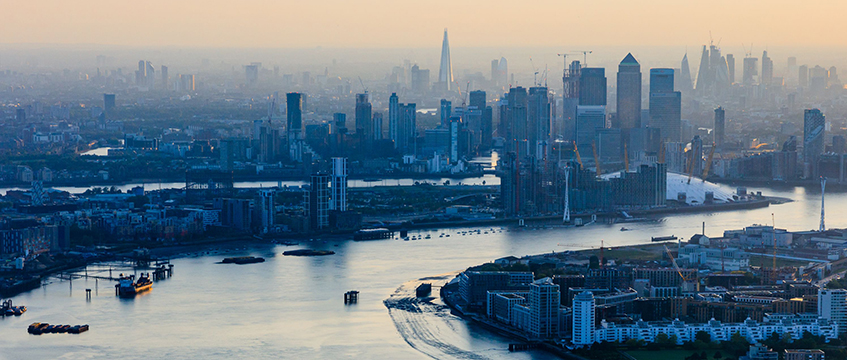The City of London faces a bill of almost £2bn to help its dated offices and other buildings meet “net zero” emission targets.
To achieve carbon-neutral buildings by 2050, all buildings in the Square Mile should have an average A-rated energy performance certificate by 2032, according to data from Netherlands-based sustainability specialist CFP Green Buildings. The firm carried out the study on behalf of the City of London Corporation.
The current average EPC rating for buildings in the City is D. The annual cost of energy in the area is £158m, and the average age of buildings in the square mile is 45 years, according to the report.
The study found that offices require the bulk of investment (£1.1bn) to become carbon-neutral, followed by shops (£290m) and houses (£239m).
Bram Adema, managing director of CFP Green Buildings, said: “The D rating is low when you consider the City of London is a rich neighborhood. Two-thirds of the buildings we assessed had a registered EPC. If you don’t have an EPC you could be at a financial risk.”
See also: Counting the cost of the climate change challenge
The Square Mile has around 10.7m sq m of offices, flats, shops and other buildings. The properties are mainly offices (7.1m sq m), residential and retail.
CFP digitally scanned 412 properties, including 169 larger office buildings and 131 apartment complexes. Using data from HM Land Registry, the tool assessed the characteristics of each building. In total, there are 128 types of buildings in CFP’s software and more than 70 measures a client can take based on the era of the building.
The report lists a series of “quick wins”, including installing LED lighting and improving air ventilation systems and solar panels with scheduled renovation.
The firm has already applied the tool to more than 300,000 buildings in the Netherlands and is hoping to roll it out in the UK with its partner, Dutch bank ING.
CFP has so far signed up Lloyds Bank as a client and, together with ING, is in talks with other banks and financial institutions.
The findings come as the City of London Corporation prepares to unveil a new climate strategy by next summer that will set it on the path to make the City carbon-neutral by 2050.
Earlier this month, the corporation’s district surveyor and environmental resilience director, Gordon Roy, told EG that the governing body was targeting “clean, lean and green” buildings as part of the agenda.
A target to cut greenhouse gas emissions to net zero by 2050 became law in June, making the UK the first major economy to legislate to end its contribution to global warming.
This week, a separate study claimed the cost of overhauling the UK’s transport and energy infrastructure to hit 2050 emission targets could reach £286bn.
Research firm Capital Economics carried out the analysis for Scottish Power.
The report estimates that the UK will need more than 22.2m electric vehicle charging points by 2050, with about 2.6m of these in public places. The costs of installation will be close to £50bn, the report suggests. A further £192m will need to be spent on installing heat pumps in UK homes.
For more on sustainability in real estate, visit EG’s Sustainability Hub
To send feedback, e-mail anna.ward@egi.co.uk or tweet @annaroxelana or @estatesgazette











